This week in the Marvel Rundown: Marvel lifts up their queer voices and puts a spotlight on their LGBTQ heroes in a special guest column from Avery and Ollie Kaplan. Plus: The Silver Surfer dies again!
Welcome back to another edition of the Beat’s Marvel Rundown, our weekly look at the latest comic releases from the House of Ideas. This time around, Avery and Ollie Kaplan join the Rundown crew with an in-depth conversation about this week’s anthology, Marvel United: A Pride Special #1. Plus, Greg Pak and Sumit Kumar kick off the end of days for the sentinel of the spaceways. We’ve also got our regular lightning round look at the ongoing Giant Size adventures of the X-Men in Giant Size Dark Phoenix #1, a new Spider-Girl, and a tie-in to the hit video game, Marvel Rivals: Ignite #1. Let’s get to it!
The Beat wants to hear from you, True Believers! Tell us what you think of this week’s Marvel Comics! Shout us out in the comment section below or over on social media @comicsbeat, or @comicsbeat.bsky.social, and let us know.
The T4T Review of MARVEL UNITED: A PRIDE SPECIAL #1 (2025)
By Avery and Ollie Kaplan
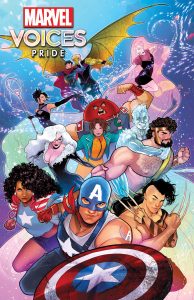
Marvel United: A Pride Special
Letters: Ariana Maher
Main Cover: Lucas Weneck
Designer: Stacie Zucker
Editors: Michelle Marchese & Lindsey Cohick
“Who We Are”
Story: Al Ewing
Pencils & Inks: Kei Zama with
Colors: Brittany Peer & Irma Kniivila
AVERY: I appreciate how this story implicitly acknowledges that there is now zero distinction between “actual conservative talking points” and “comic book super villain monologues.” And I loved the cast of this story: Aaron Fischer, Escapade, Dr. Charlotte McGowan and Lady Loki. These are all characters who deserve more time in the panels of Marvel Comics. And I liked seeing them come together as an all-new, all-trans super team!
I also appreciated the lack of subtlety in this story. At a time when trans people are under attack by people who are consumed by hate, it was cathartic to see Hatemonger — AKA Hitler’s Ghost — defeated by a trans team. The art did a great job of shifting between more grounded panels for the majority of the story, and more free-flowing pages when the Queen of Nevers was present. And the lettering was well done as well, especially in the Queen of Nevers’ multicolored speech bubbles.
OLLIE: “Words and art make dreams.” The anti-trans contingent doesn’t want us to dream, so they’re taking away our art. By taking away our dreams, they think they can strip of us humanity. And by stripping us of our humanity, they’re hoping to rewrite not only our history but theirs, too. Just like they did to my Jewish and Indigenous forebearers, they’re hoping to strip the historical record of queer “perversion” (to save the children!), although research says that it’s actually their bigoted narratives that are responsible for the harm to these children. Twenty years from now, MAGA will be the equivalent of NAZI, and I loved how the first story directly draws a comparison between Adolf Hitler’s Germany and Donald Trump’s America, using Hydra (Marvel’s version of Nazis) as the mouthpiece of MAGA and MAGA-adjacent media. For example, this story’s villain monologue read to me as a reference to Fox News host Jesse Watters‘ “Rules for Men,” which even includes, “You shouldn’t be drinking a milkshake,” a statement that retroactively adds a lot of context to the Heather Antos milkshake debacle (or maybe was a result of the debacle?)
“Good Night, Blue Rose”
Story: Wyatt Kennedy
Pencils & Inks: Bayleigh Underwood
Colors: Kniivila
AVERY: After the superhero action-packed opening of “Who We Are,” we get a slower-paced story in “Good Night, Blue Rose.” While the title initially reminded me of Twin Peaks, this is a quieter story about Mystique, Irene Adler and their relationship with their son, Nightcrawler. For those keeping score at home, the entire 2024 Marvel Comics Pride issue was based around the relationship between Mystique and Adler.
I did appreciate the way this story shared a personal conversation between a mother and child about the realities of dealing with prejudice. Normally I’m not as big a fan of “it was all just a dream” stories, but given the nature of the Marvel multiverse, I didn’t find that to be a dealbreaker here. Plus, it was nice to see queer characters depicted as part of a family (even if only in dreams).
OLLIE: Avery, it may only be in dreams soon…if the fascists have their way.
For me, this was one of those stories that was intensely personal. As a second-generation American, I’ve been thinking about identity lately and where I learned how to distance myself from that identity. When I talk about who I am, I never say “I am…” Instead, I say, “I am from…” or “I identify as…,” statements that distance me from living authentically as me. I’ve concluded that I do that because assimilation was valued by the community I was raised in. Growing up, while I was told to find my passions and explore who I am, I was also given the message that assimilation was the ticket to success and happiness since it created the opportunity for social mobility for those who traditionally couldn’t access it. While I think these messages were all well-intentioned, what they taught me was to live in fear of what my body has tried to tell for years: “This isn’t who you are.”
I see this contradiction of messages in “Good Night, Blue Rose.” Although Mystique is telling her son to be proud of who he is, she’s also so afraid of him being othered that he’s not allowed to do typical kid things, such as going to school. Even though Mystique is saying one thing, her actions can be interpreted differently. Even when well-intentioned (like it seems to be with Mystique), it can be confusing if a loved one tells you that they love you for who you are, but then asks you to hide your authentic self to avoid discrimination and hate. The very act of making decisions for another based on the fear that they may experience hardship leads to feelings of being othered—and these well-intentioned requests to hide your identity (so that your life is “easier”) is something that I believe is a common experience in the queer community.
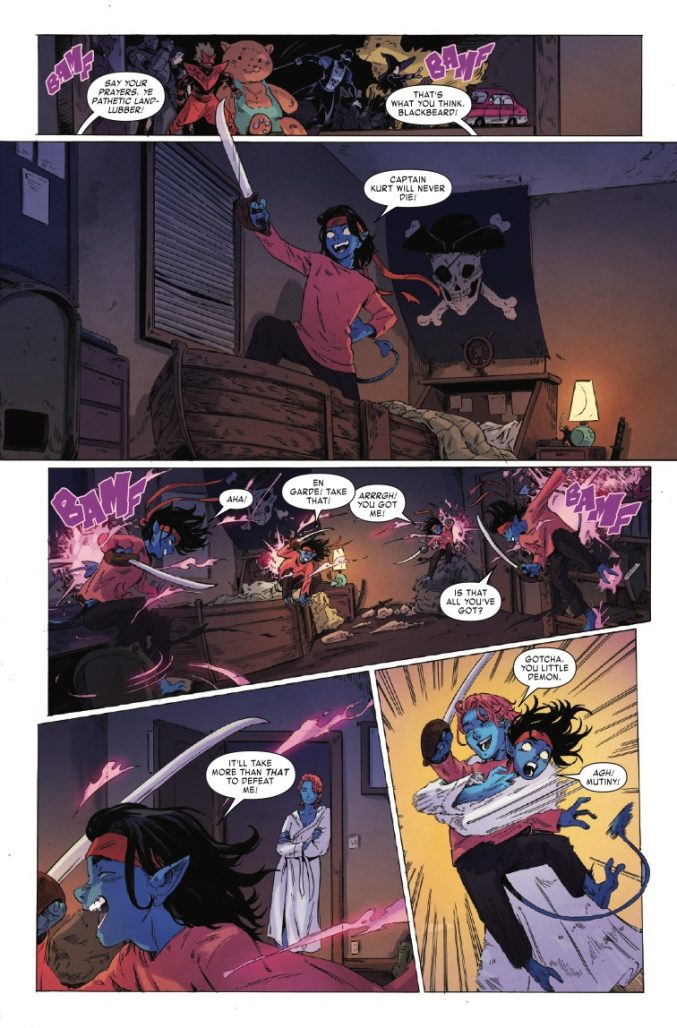
“The Bolter”
Story: Zoe Tunnell
Pencils & Inks: Federica Mancin
Colors: Tamra Bonvillain
AVERY: Speaking of trans characters we don’t see often enough, it was nice to see Sera again. In this story, she runs into Black Cat while they’re both attempting to undertake the same heist. This reminded me a lot of “When a Black Cat Crosses Your Path,” a story from Marvel’s Voices: Pride (2021) #1, in which Jessie Drake crossed paths with Black Cat. However, in “The Bolter,” both Sera and Black Cat are subsequently subjected to visions of their greatest regrets.
While “Who We Are” and “Good Night, Blue Rose” were more focused on the state of the world at large, “The Bolter” is more focused on righting a wrong in Marvel continuity. It’s no secret that a contingent of vocal Marvel fans (yours truly included) have been disappointed with the fact that Sera and Angela have been split up. This story moves towards amending that relationship.
OLLIE: “Giant ripped-to-hell sword-lesbian.” That perfectly describes Tunnell’s brand. For those of you who are new to Tunnell’s work, she’s best known as the co-creator of Blade Maidens and has written critical pieces on how Marvel handled Sera and Angela’s relationship. I imagine that Tunnell, as a trans critic who has been very open about what their relationship has meant to her personally, was ecstatic to write this story because it sets the stage for a future story about the women getting back together. And in June 2025, when queer love is an act of resistance more than ever, it’s nice to see a Marvel comic where the love between two women is celebrated. Our love is beautiful, and it’s NORMAL.
Since the queer community’s constitutional right to marry is currently at risk (and legal precedent doesn’t seem to matter to this administration), this story could easily be interpreted as political. However, I chose to read it differently. To me, it was a break from the heavy political messaging of the other stories in this issue. Instead of highlighting our differences, it celebrates the one thing everyone has in common: a need for human connection, despite its messiness.
PSA: I’ve heard allies distinguish between “queer” and “normal” relationships. To be blunt, don’t do that—ALL LOVE between consenting adults is normal. We’ve always been here.
“My Buddy”
Story: Anthony Oliveira
Pencils & Inks: Pablo Collar
Colors: Michael Wiggam
AVERY: Finally, “My Buddy” takes place back when the United States was in the business of fighting fascism instead of peddling it. However, the story underscores that even at this time, the U.S. was in the business of giving out “blue tickets,” which allowed for the discharge of gay people from the military. Boy, the more things change, huh?
This story ties in with Oliveira’s Avengers Academy Infinity Comic. While I’m not familiar with that series, the first six episodes of which are now available in print, I had no problem following or enjoying this story.
OLLIE: To echo Avery, “The more things stay the same.” After the LGBTQIA+ community’s long and hard-fought legal battle to be allowed to even serve in the military (the ban ended in 1993), plus even more legal battles to serve in the military openly (“Don’t Ask, Don’t Tell” was repealed in 2011), we are back in court. Although, in 2025, the face of the fight is the trans community, at its core, the fight is the same. No matter who you are, you should be able to decide to join the military—and more importantly, reap the economic, social, and medical benefits of that service (because, at the end of the day, military service has long been an avenue of social mobility for marginalized and low socioeconomic status individuals who would not have access to health care and education without their military benefits).
On a fun note, I love my headcanon version of this story, which, thanks to my AuDHD thought process, requires some explanation of how I got there. So, I’ve learned from Star Trek (and , of course, IRL stories of actors and dancers) that if you put a bunch of sexy people in a room together, sexy things are bound to happen—no matter the person’s gender (Ghost of Kinsey, test my theory). With superheroes all being so sexy and scantily clad, I have a hard time believing so many of them would be straight. I have an even harder time believing that Steve Rogers wouldn’t try more than one hanky-panky flavor in his very-long lifetime. Because of these considerations, my headcanon version of this story includes at least one off-panel rendezvous with Arnie, Steve, and of course, Bucky. We all saw that look Steve gave Bucky in Captain America: Winter Soldier.
Final Thoughts
AVERY: Overall, I enjoyed this issue a lot. While it didn’t feature as many stories as some of the past Marvel Voices: Pride issues, the longer stories worked well, allowing us to dig a little deeper. I liked the way that all four stories had their own tone and style, showcasing the versatility of queer comics set in the Marvel universe. If I had to choose a favorite, I’d have to say it was “Who We Are.” I enjoyed the cast of trans characters and it was nice to see Ewing follow-up on some of the elements from his Immortal Hulk series.
Also, I was pleased to see that Marvel continued to publish their annual Pride comic in light of the virulent anti-LGBTQ+ extremism currently being spouted by American conservatives. For a moment, I was worried that the title would be phased out, as with the completed Moon Girl and Devil Dinosaur episode that was withheld by Disney because of its message of trans inclusion. I also appreciated that Marvel United: A Pride Special focused on trans people, who are the specific target of the right wing CHUDs who are intent on transforming our country into Secret Empire (2017).
OLLIE: Considering how many baby queers figured out that they were queer watching X-Men ’92, I was excited to see that Emmett Yonemura wrote the introduction to this year’s Marvel Pride issue. I’ve had the pleasure (as a board member at Prism Comics) of having heard the story of how Emmett’s directorial work on X-Men ’97 had inspired them to come out and tell the world that they were nonbinary on Trans Day of Visibility about a year ago—thank goodness, it’s the INTERNATIONAL Trans Day of Visibility, or I’d be writing pour one out for any official day recognizing that we’re here, we’re queer, and we’re DEFINITELY NOT coming for your children (but we’ll be here when they arrive on their own). As a trans genderqueer person myself, if I wasn’t so afraid for my continued right to exist under America’s fascist regime, I would probably use this space to call for Trans Day of Visibility every day until our rights are restored. But I am afraid. We’re all afraid. According to a 2025 Williams Institute study, 48 percent of transgender people who were surveyed had considered leaving the United States, a number I think would be higher if trans women didn’t make 60 cents for every dollar the typical worker earns (turns out most countries have an income requirement).
I agree with Avery that for a time I was convinced that this year’s Pride issue would not be released, and I am GLAAD that I got that wrong. I have been told that Marvel follows the fan discourse about its releases, so I assume it follows these reviews, too. So, I want to say to the Marvel team, “We recognize your courage.” It turns out that the only thing worse than corporate Pride is no corporate Pride. With so many companies and brands abandoning the queer community in 2025, even publishing a single-issue Pride Month special is a major statement…and act of allyship.
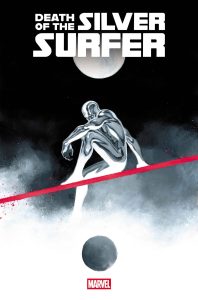
Death of the Silver Surfer #1
Writer: Greg Pak
Artist: Sumit Kumar
Colors: Frank D’Armata
Letterer: VC’s Joe Sabino
Cover Artist: Dike Ruan
A new comic about the final days of The Silver Surfer has an enormous task in front of itself to exist outside of the shadow of J. Michael Straczynski and Esad Ribic’s all-time classic Silver Surfer: Requiem. That book is one of the best of Straczynski’s comics career and one of Marvel’s greatest standalone, evergreen stories. Revisiting the concept is treacherous when the concept has already been done so well. Obviously, Marvel and Pak have a story they want to tell in-continuity, but it will inevitably draw comparisons. If anyone can find a compelling angle to revisit the idea, it is writer Greg Pak, whose work on Hulk, Magneto, and Darth Vader have proven among the best and most memorable comics for their characters.
It is hard to say after one issue whether this series will live up to its predecessor, but this is an undeniably compelling introductory chapter. The Silver Surfer is one of Marvel’s richest characters, full of deep, sometimes crippling empathy, existential angst, and poetic introspection. Pak’s script taps into that by presenting the Surfer’s Power Cosmic as an almost omnipresent awareness of the interconnectedness of the universe. A dying man, a dead cockroach, a raging black hole threatening the lives of billions on an alien planet deep in space, are all part of a single whole. This sequence showcasing The Silver Surfer’s compassion and vast powers, and his Christ-like admonition to the healed man to do what ever he can to help others in his next opportunity, is a terrific showcase of what makes Norrin Radd so rich. He is driven by the guilt of his complicity in the billions upon billions of death he abetted to satiate Galactus’s hunger, a perspective that has made him uniquely aware of how precious and fragile all life is.
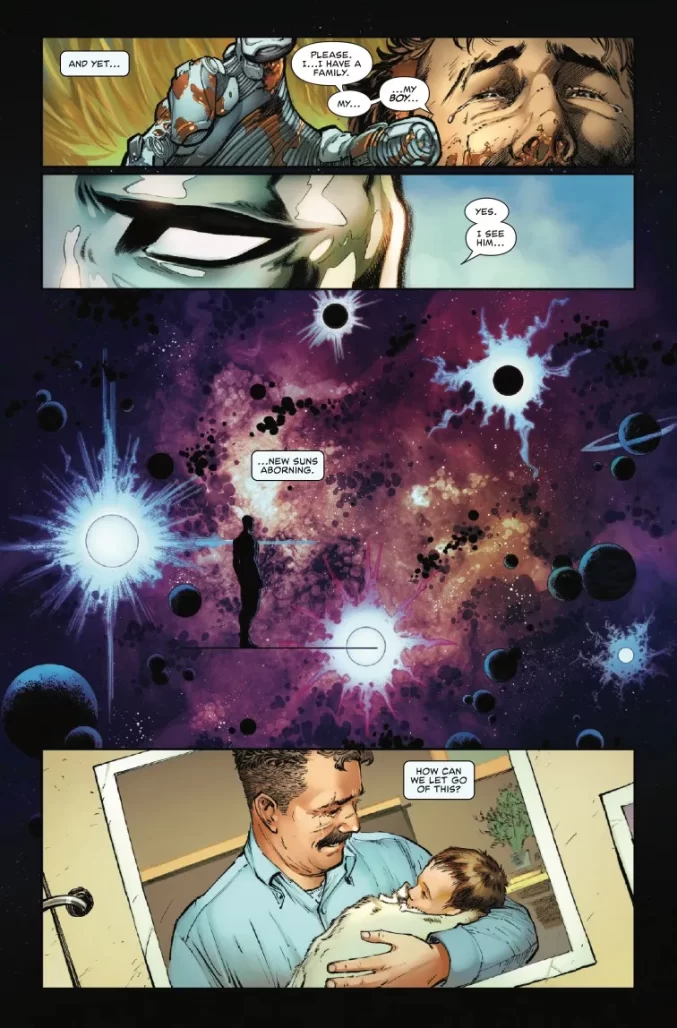
The visuals in this sequence are stunning, as well. Sumit Kumar flashes through a rapid succession of close up imagery of tiny details arranged beside cosmic panoramas. An eye staring off into the distance mirrors a black hole; the Surfer sees all of creation in a single human life. Frank D’Armata’s coloring is rich in pinks and violets evoking classic black light poster imagery, making the deep-space cosmic scenery feel appropriately otherworldly. VC’s Joe Sabino’s work stands out in the terrific SFX, which mesh perfectly with the lineart, rippling or jagged as appropriate.
The rest of the issue is perfectly fine but feels like a letdown after the stunning opening. The Surfer unilaterally puts an end to a civil war, showcasing incredible power in his almost divine punishment. The Fantastic Four muse on the outcome and possible fallout, but the more important person watching is an over-the-top tech-bro mogul who wants to eliminate aliens from Earth and use their powers to enrich himself. This is where the book is at its weakest. Pak’s script is incredibly on-the-nose, with a billionaire who is more detached from what it means to be human than the alien Silver Surfer. This leads our hero to encounter a new character, Kelly Koh, an alien-hunting mercenary whose life the Surfer saves despite her attempts to kill him. Koh has the potential to be interesting, a well-meaning but morally gray killer with a deep love for family. But she feels more like a caricature than anything else so far. How will being around the Silver Surfer change her? And will her moral compromises be what leads to his portended doom?
It’s hard to draw any conclusions of what this comic will be after this first issue because so much of it is tablesetting. But Kumar and D’armata’s art is stupendous and Pak is treating the story with a level of gravitas befitting the title’s name.
VERDICT: There’s enough good here to BROWSE, but how well the weak villain will mesh with the cosmic introspection in the end remains to be seen.
THE RAPID RUNDOWN
- Marvel Rivals Ignite #1
- If this is the direction Marvel is going to take with its Marvel Rivals comics, they may have a hit on their hands. Rather than being a cookie-cutter origin story for many Marvel characters, Marvel Rivals Ignite #1 splits itself into three short stories that focus on the characters’ “Demon Days” cosmetics. The first story, “Demon Days: Ko-Sute-Iwa,” has story and art by the always amazing Peach Momoko. There is nothing more to say about Peach Momoko’s art that hasn’t already been said. Their art and writing have been the highlights of many Marvel comics in the past, and here is no exception. Peach Momoko does a great job drawing and characterizing Psylocke and has a genuinely bone-chilling encounter with the “Sym,” this world’s interpretation of Venom. This story alone is enough to carry the issue, but the following short story is also a delight.
Titled “Tsuchigumo,” with story and art done by Yuji Kaku, this one focuses on Punisher and Peni Parker. The Punisher skin was always the strangest cosmetic created, but Yuji Kaku does a great job of making it seem seamless in a world alongside Peni’s Mecha. Even when he activates his ult and guns down Peni Parker, it doesn’t feel as if it’s ripping anyone out of the experience. With great action, a stunning spread of Punisher vs. Peni, and great comedic beats, this story stands out alongside the first one.
The last story, “Sounds of Victory” by Mitsuyasu Sakai and art by Ryusei Yamada, is the weakest of the three, but only because Luna Snow is the lowest of the characters. She duels Hela with some outstanding choreography, but the story is hindered by a “multiverse” plotline, making Hela’s motivation somewhat strange. Still, the issue needs to be picked up. – LM
- If this is the direction Marvel is going to take with its Marvel Rivals comics, they may have a hit on their hands. Rather than being a cookie-cutter origin story for many Marvel characters, Marvel Rivals Ignite #1 splits itself into three short stories that focus on the characters’ “Demon Days” cosmetics. The first story, “Demon Days: Ko-Sute-Iwa,” has story and art by the always amazing Peach Momoko. There is nothing more to say about Peach Momoko’s art that hasn’t already been said. Their art and writing have been the highlights of many Marvel comics in the past, and here is no exception. Peach Momoko does a great job drawing and characterizing Psylocke and has a genuinely bone-chilling encounter with the “Sym,” this world’s interpretation of Venom. This story alone is enough to carry the issue, but the following short story is also a delight.
- Spider-Girl #1
- Well there’s one more Spider person crawling around New York and her name is Spider-Girl. The character spins out of the series starring the bestest, best boy there ever was and everyone in the Marvel Universe’s favorite character and best friend Spider-Boy. Spider-Boy was a series that embodied the idea of “mandatory fun” (comics where YOU WILL HAVE FUN because the story demands it!!!) at its worst, the spinoff Spider-Girl seems far more enjoyable in its first issue. Writer Torunn Grønbekk doesn’t quite do the leg work in this issue of justifying why this book exists but does make Maka Akana a unique character in Spider-Man line of books. She contends with the fact her mentor Bullseye betrayed her and also her new spider based powers. There is a little bit of a darkness and competitive edge to her character which gives her some individuality. It will be interesting to see how Grønbekk explore this and how her mutant ability to copy a person’s memories and abilities by looking at them in future issues. The real star of this issue though is artist André Risso. When was the last time you read a Spider-Man book and the art looked this genuinely fun and energetic? Spider-Girl moves and poses in throughout the page with a real sense of motion. Risso really just nails the funky contortions required for a Spider-Man related character. When Maka fights anyone and starts copying her powers, he depicts her seeing each opponent surrounded by graffiti and sketches reflecting their abilities and thoughts. This kind of visual uniqueness certainly will help Spider-Girl stand out amongst other Spider-Man books. – D. Morris


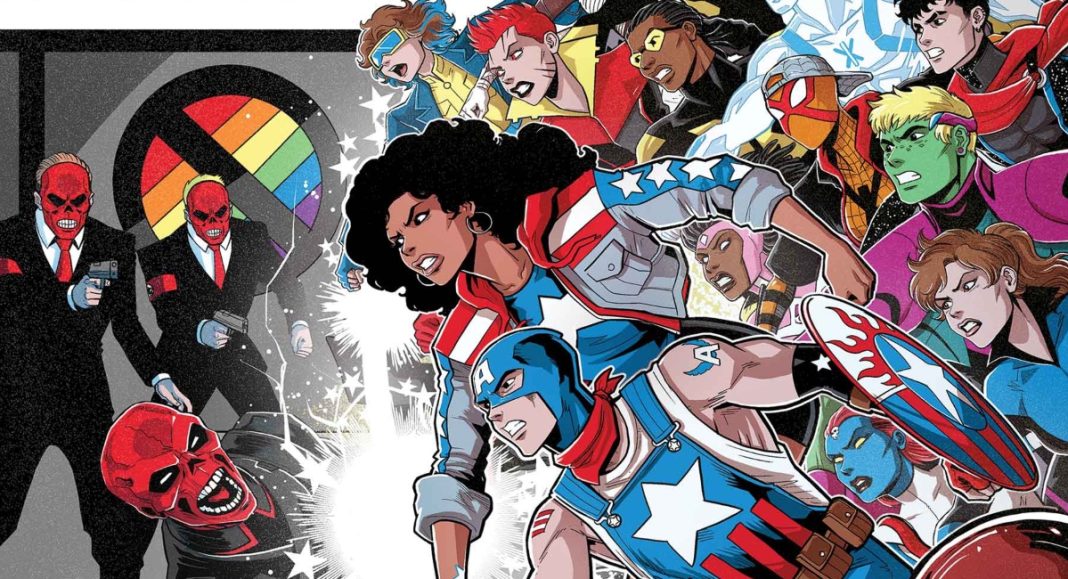

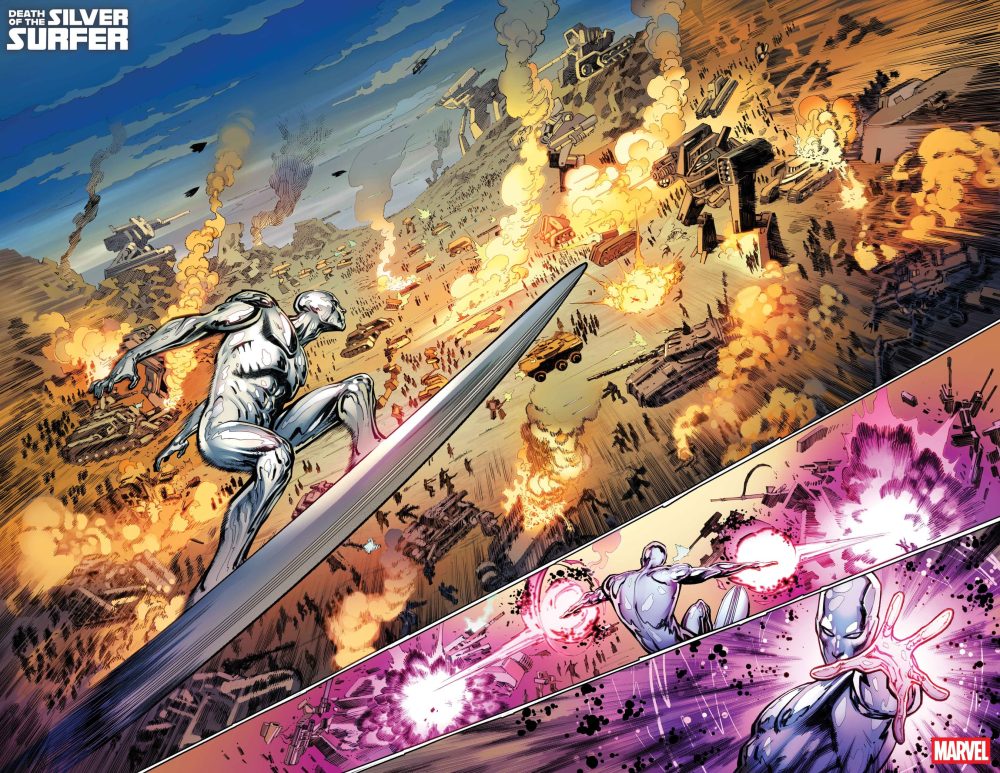
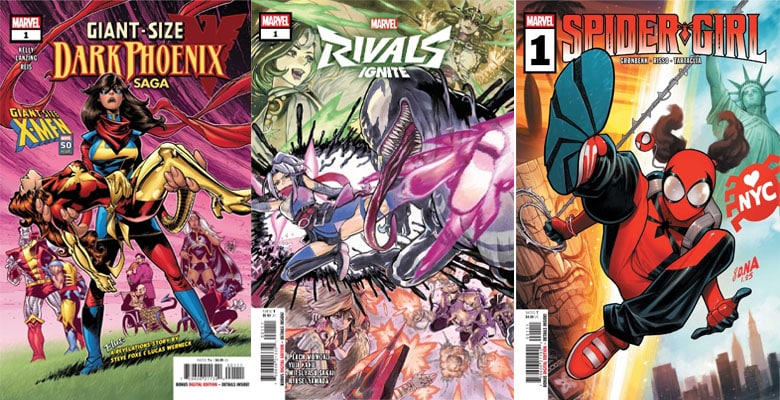
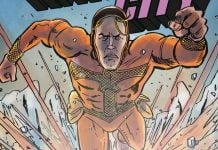


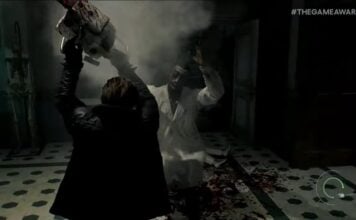



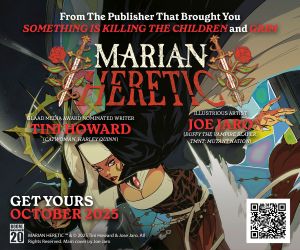
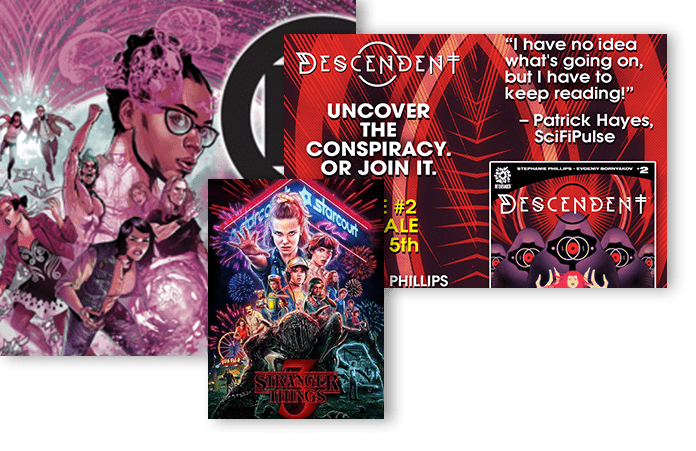
Marvel and Disney have become very anti adoption. The way it treats Rogue compared to Nightcrawler is awful. Blue Origins was the most damaging retcon to date done by men for men to serve one male character and instead of accepting their losses and fixing it, they double down.
Comments are closed.